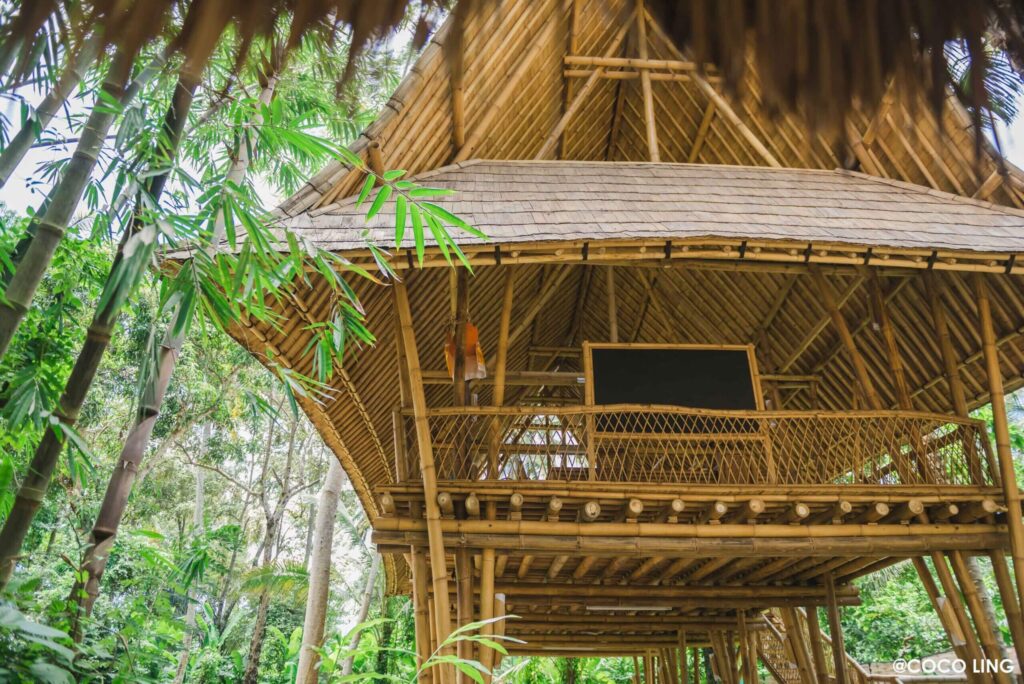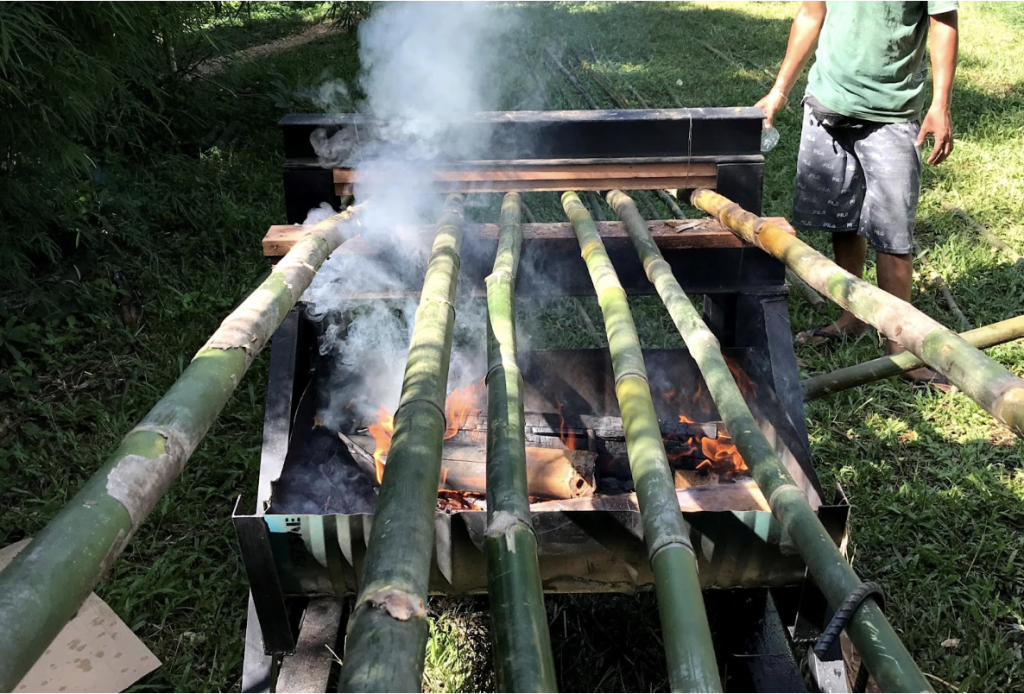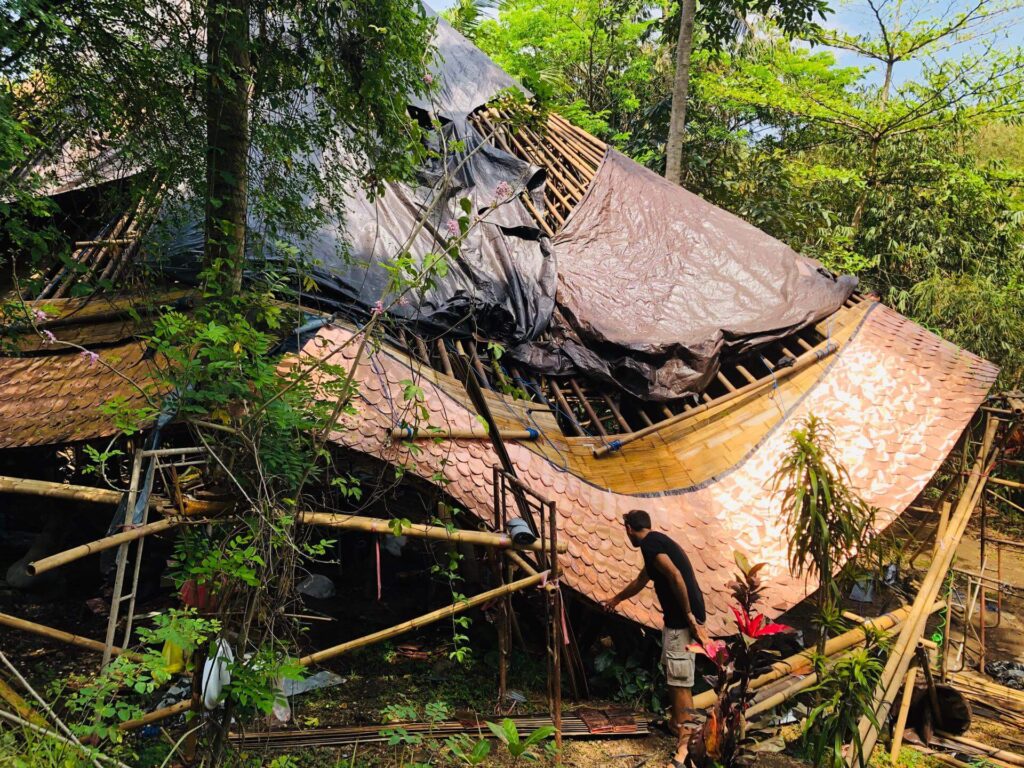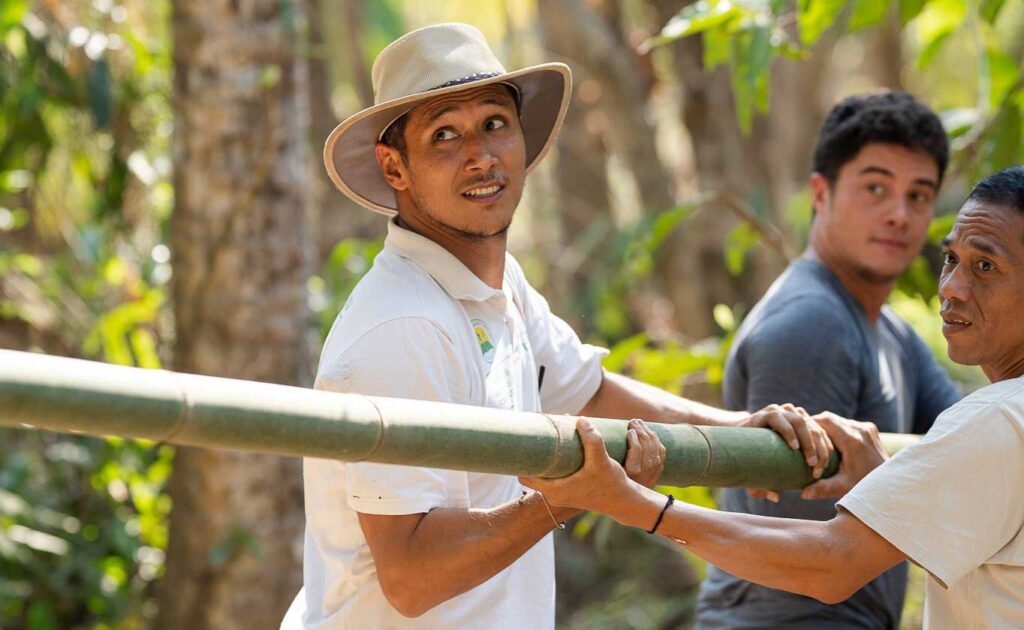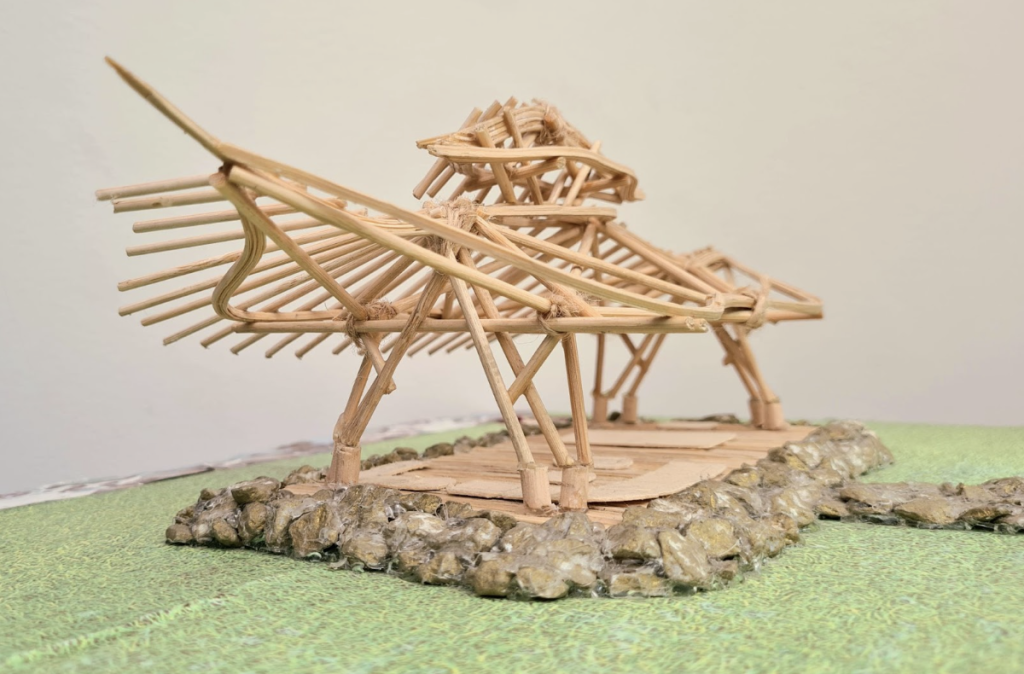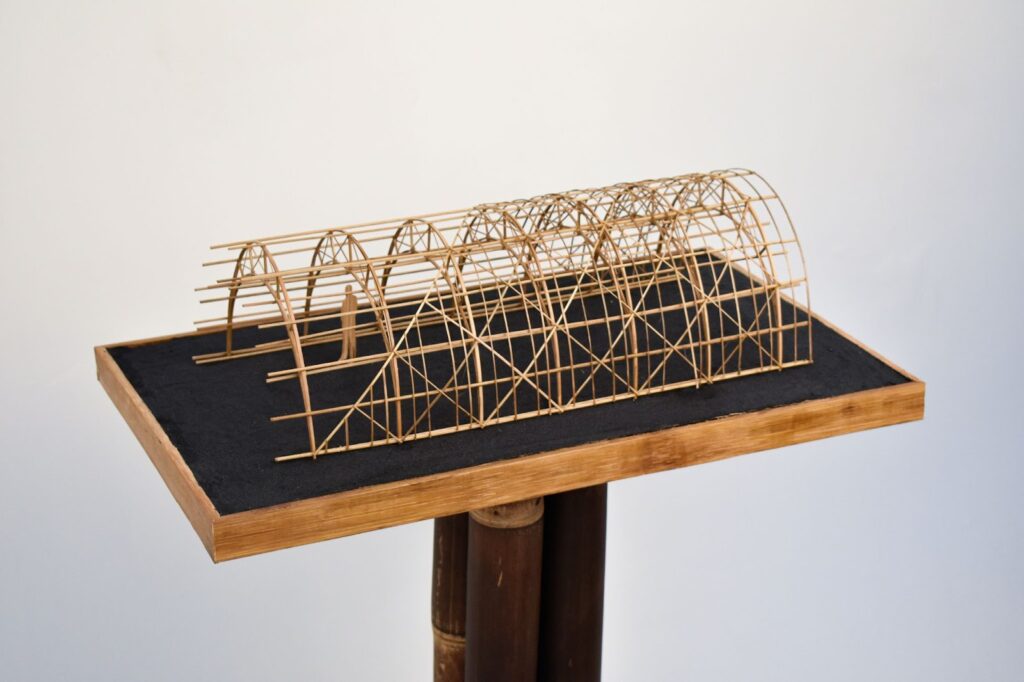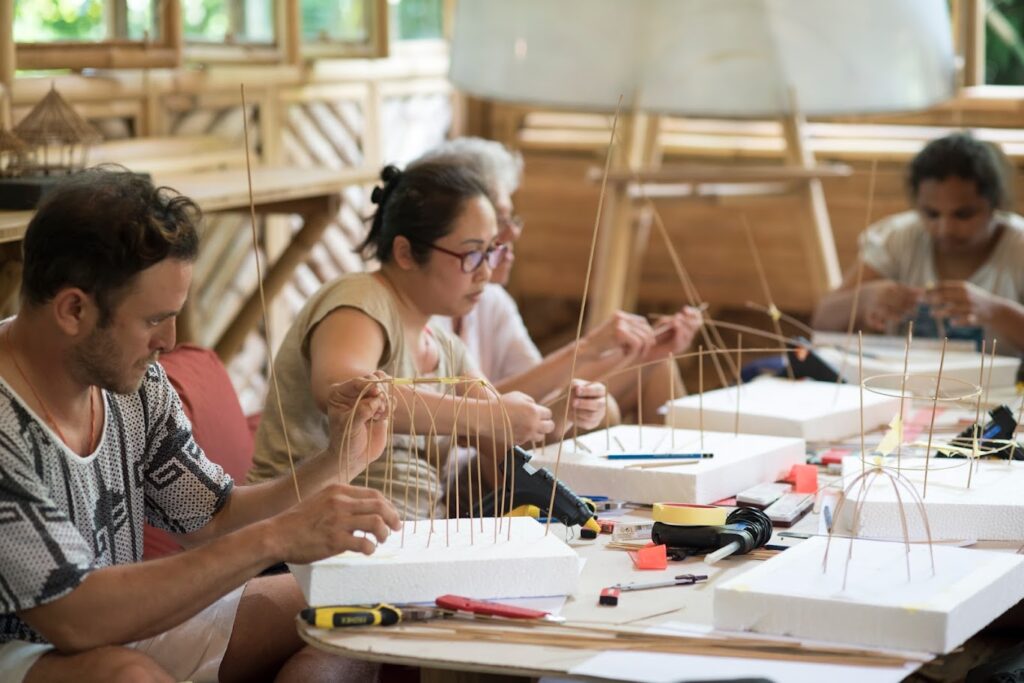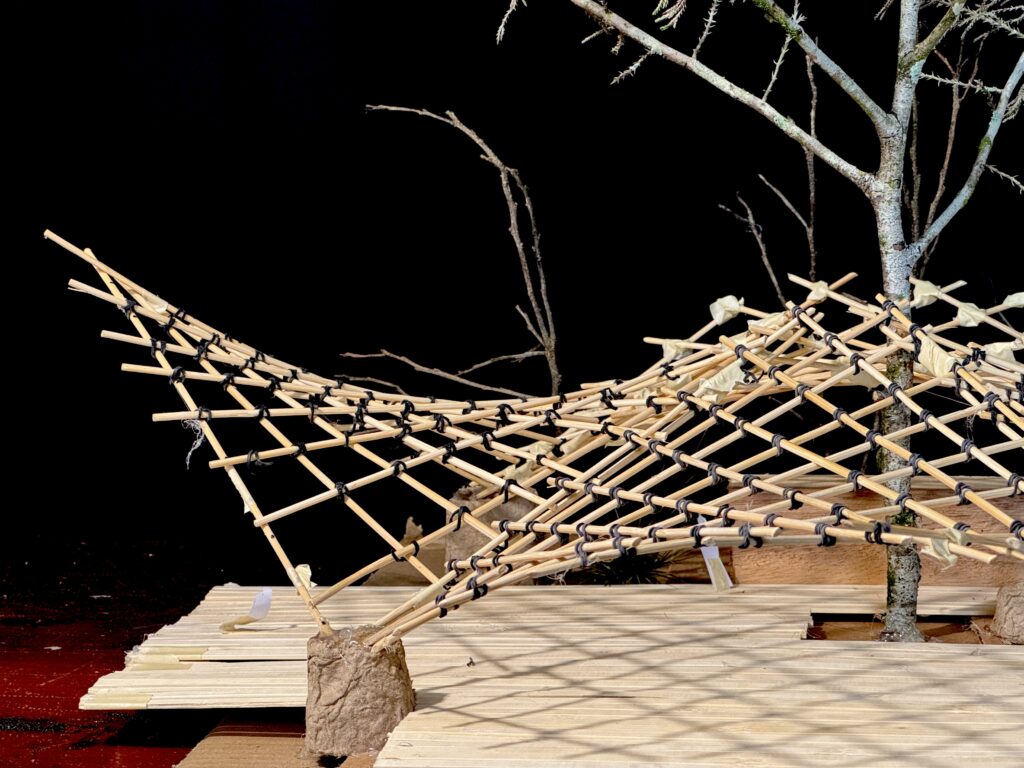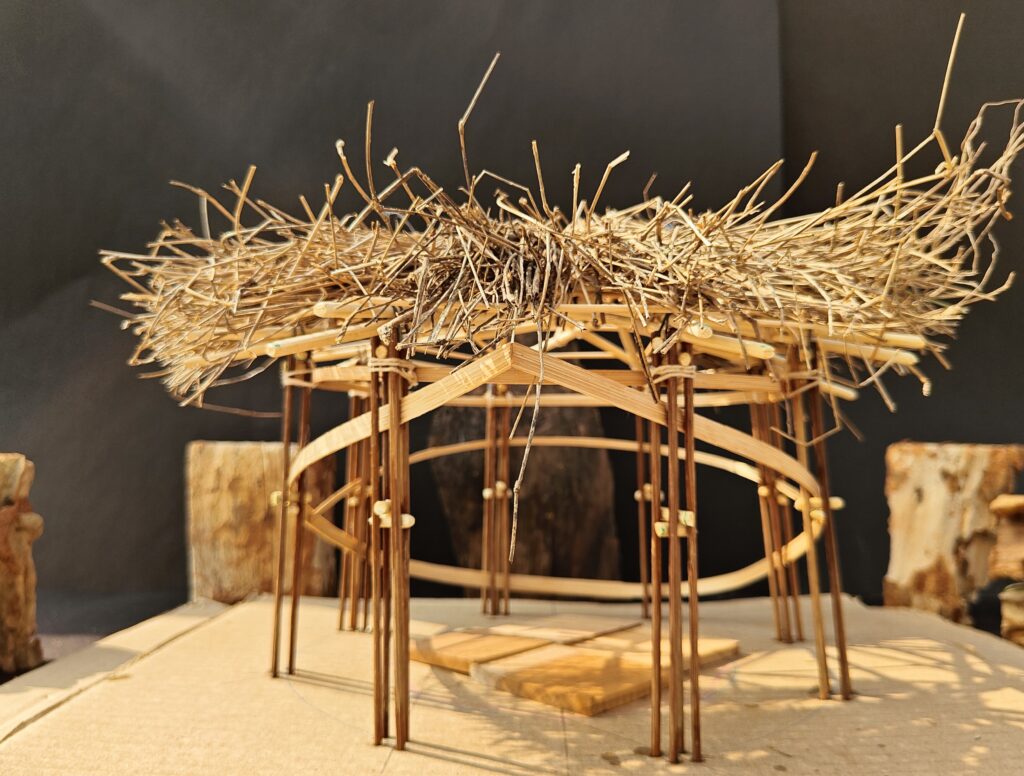Crafting A Modern Light Fixture From Black Bamboo
By Jocelyne Silva | May 6, 2024 | Student Work -
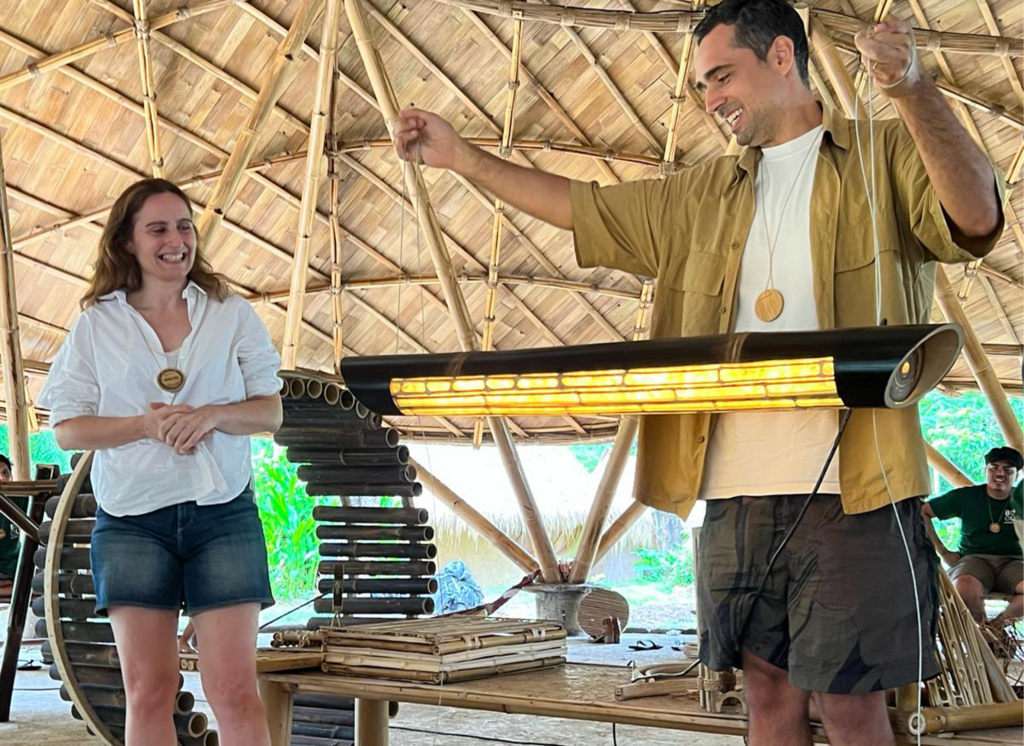
Jocelyne came from France to Bali for Bamboo U's 11-day course, aiming to refine her bamboo furniture crafting skills. She crafted a distinctive bamboo light fixture using various bamboo types explored during the course, and shares her insights in this article.
Design Idea and Inspiration
The concept for this light fixture originated from my long standing passion for crafting lamps. The idea of designing a lamp for personal use had been on my mind for some time. The perfect opportunity arose when my brother needed a new lamp for the dining room of his bamboo house. I seized this chance to design and create a bamboo lamp from scratch during the 11 Day Bamboo U Build and Design Course in Bali.
The overall inspiration is based on two fundamental points. First, I was inspired by a bamboo house in Green Village, where my brother live now. The second point was the idea of me making a lamp that responded to the tastes and desires of the residents.
I envisioned a long lamp hanging above the dining table, designed to light both the table and the bamboo on the ceiling. This dual lighting effect was achieved by creating two openings in the main structure.
For the lamp's material, I selected dark bamboo, known as Dendrocalamus asper f. niger to contrast with the lighter bamboo used elsewhere in the house. This choice is a nod to the cocoa fruit colors found in the garden.
Therefore, I used both Dendrocalamus asper, f niger (known locally in Indonesia as Petung) and Fishing Rod Bamboo, Phyllostachys aurea of the pseudosasa genus, (known locally in Indonesia as Bambu Pancing) to incorporate these two distinct bamboo shades, creating the unique appearance I desired.
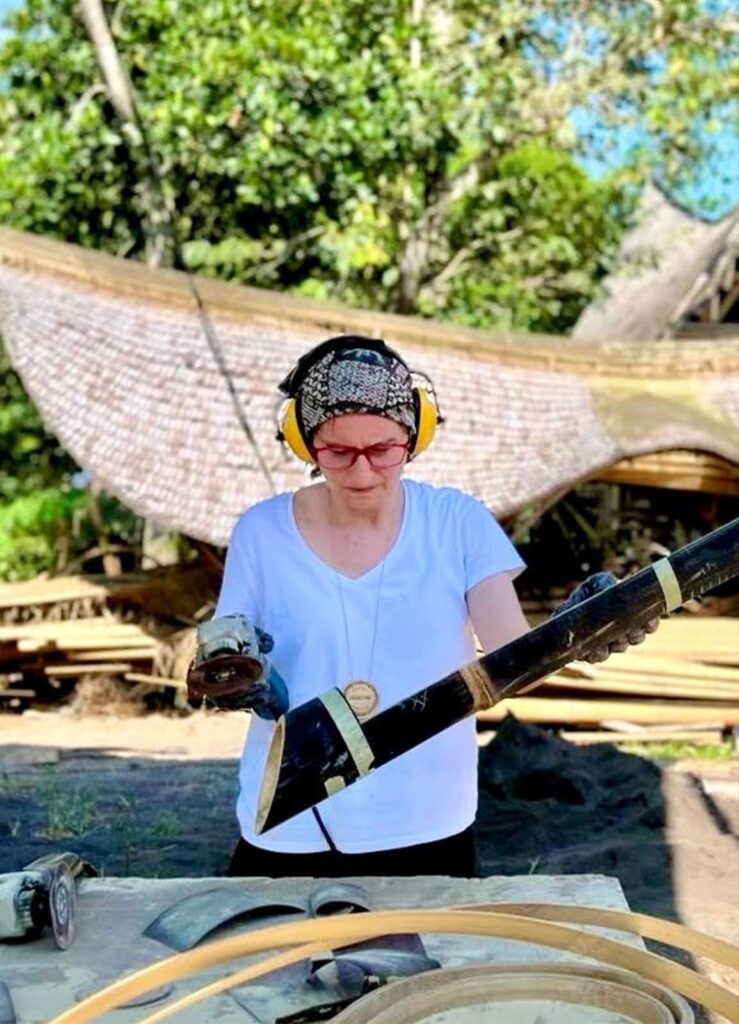
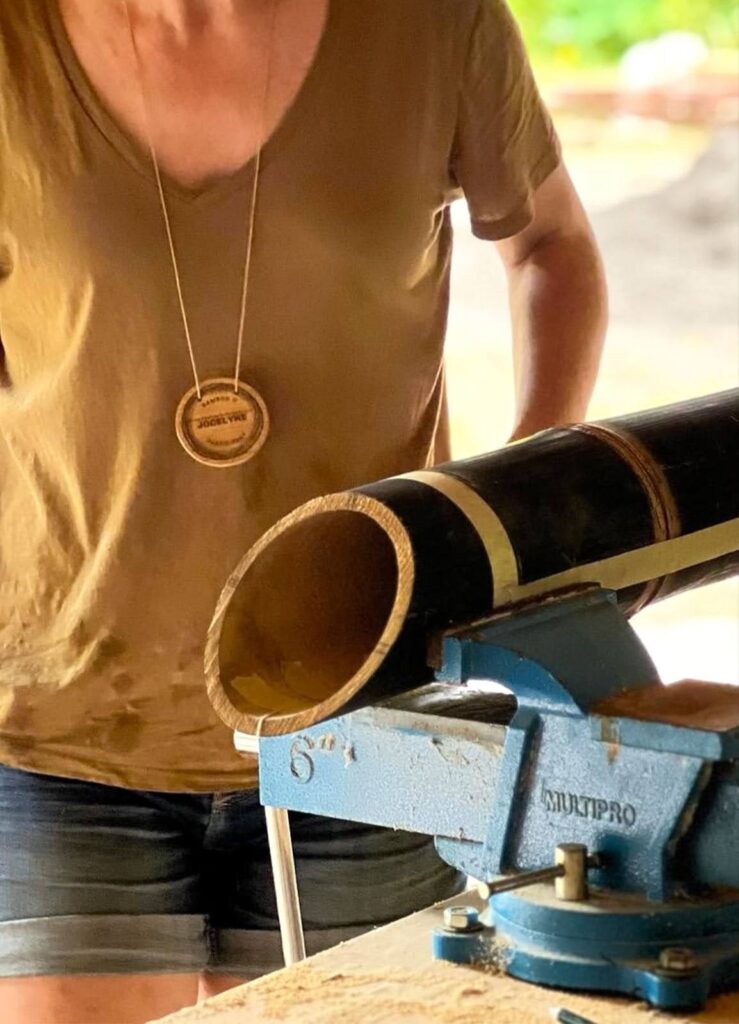
Crafting The Light Fixture
I initiated the project by drafting a preliminary sketch of the design and consulting with Moko, our lead carpenter at the station, to evaluate whether the types of bamboo I had selected were appropriate and effective for different components of the design.
We decided to use Bamboo Petung Hitam, scientifically known as Dendrocalamus asper f. niger, for the main structural poles of the lights, shaping them according to the specifications in my drawings. Additionally, I crafted two rounded slices from bamboo to serve as mounts for the lamp and to securely house the electrical components.
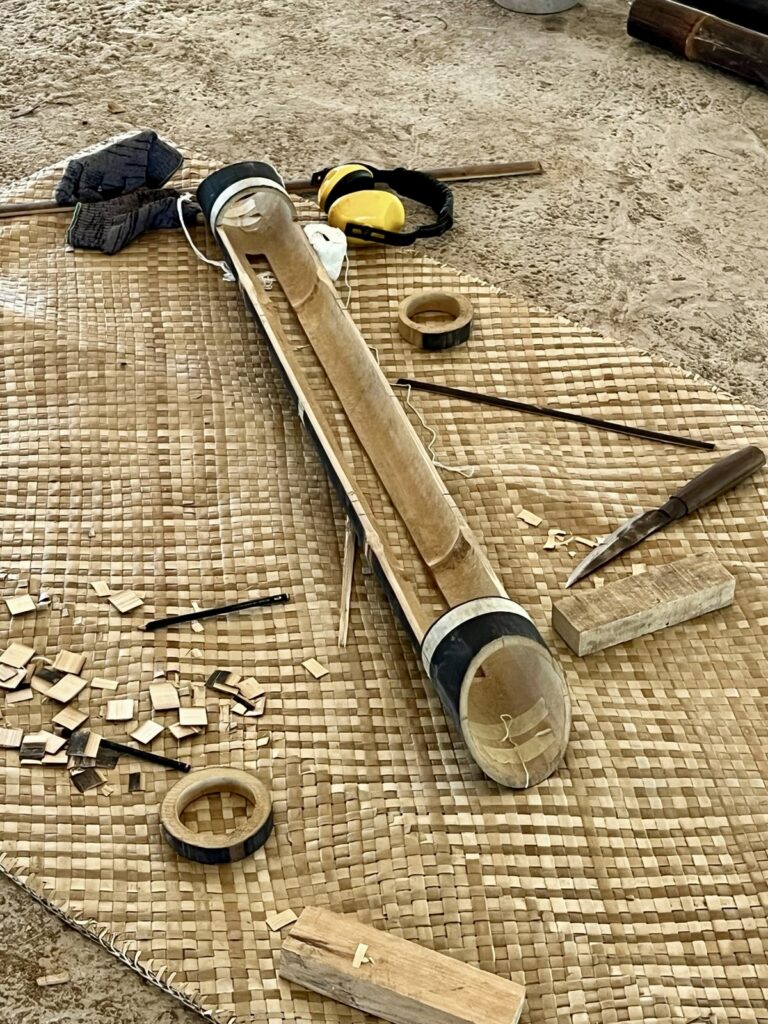
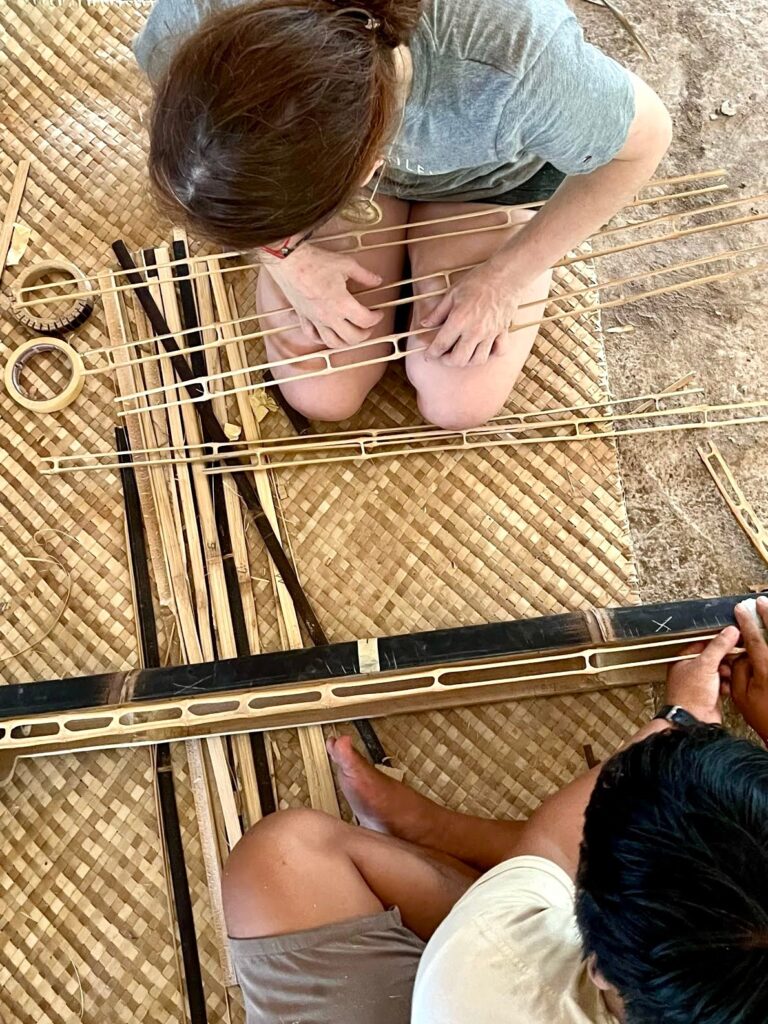
To introduce unique accents, I utilized sections of locally available bamboo referred to as 'Bamboo Pancing', scientifically named Phyllostachys Aurea. I achieved this by splitting bamboo sections and affixing them to the sides of the main pole, allowing light to permeate and adding distinctive architectural elements to the lamp's design.
I also incorporated banana paper; bamboo made locally from the stalk fibers of the banana trunk, within the lamp to conceal the electrical components and produce a softer, diffused light throughout the room.
Finally, I routed cables through the lamp’s extremities to provide support and stability when suspended.
Learnings and Final Outcome
Transforming my designs into tangible creations is always an exhilarating journey for me. Working as a designer often involves venturing into the unfamiliar, and in this project, that meant adapting to new materials like bamboo.
This shift required a rapid learning curve, and I am immensely thankful for the team and carpenters who generously shared their expertise. Their guidance was invaluable, especially in contrast to my usual medium of stone, which demands a different, more rigid method of handling. Bamboo, with its inherent flexibility and delicate fibers, necessitated a gentler approach and a shift from the precision I typically rely on.
This experience not only challenged my usual practices but also enriched my understanding of material properties and design adaptability.
Exploring new techniques was truly enjoyable, even though it took some time to master them. The pressure of a tight deadline served as a strong motivator to complete my projects, pushing me to extend my limits.
Learning to use unfamiliar tools and manually executing tasks added to the challenge. However, with guidance from Moko and the Bamboo U Team of carpenters, I was able to navigate through any difficulties that arose.
While the final outcome wasn't flawless, the process of seeing my project come to life and function as intended was immensely gratifying.

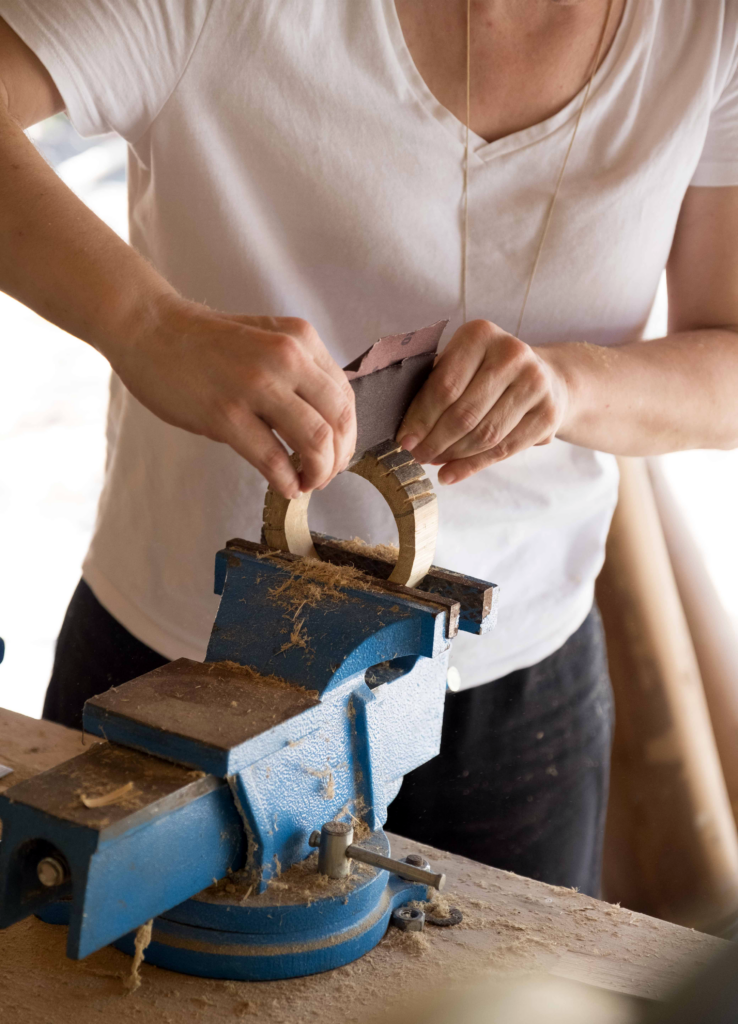
Sharing The Experience
Reflecting on the past 11 days of hands-on work with bamboo has been a pivotal experience for me. Bamboo's diverse types, each with unique potential applications, highlight the importance of hands-on learning.
As a designer, opportunities to deeply engage with new materials and explore their capabilities are rare, so I am immensely grateful to Orin and the entire Bamboo U team for their dedicated teaching. I also extend my thanks to my brother Daniel and Maria, whose support was crucial throughout this learning experience.
Thank you!
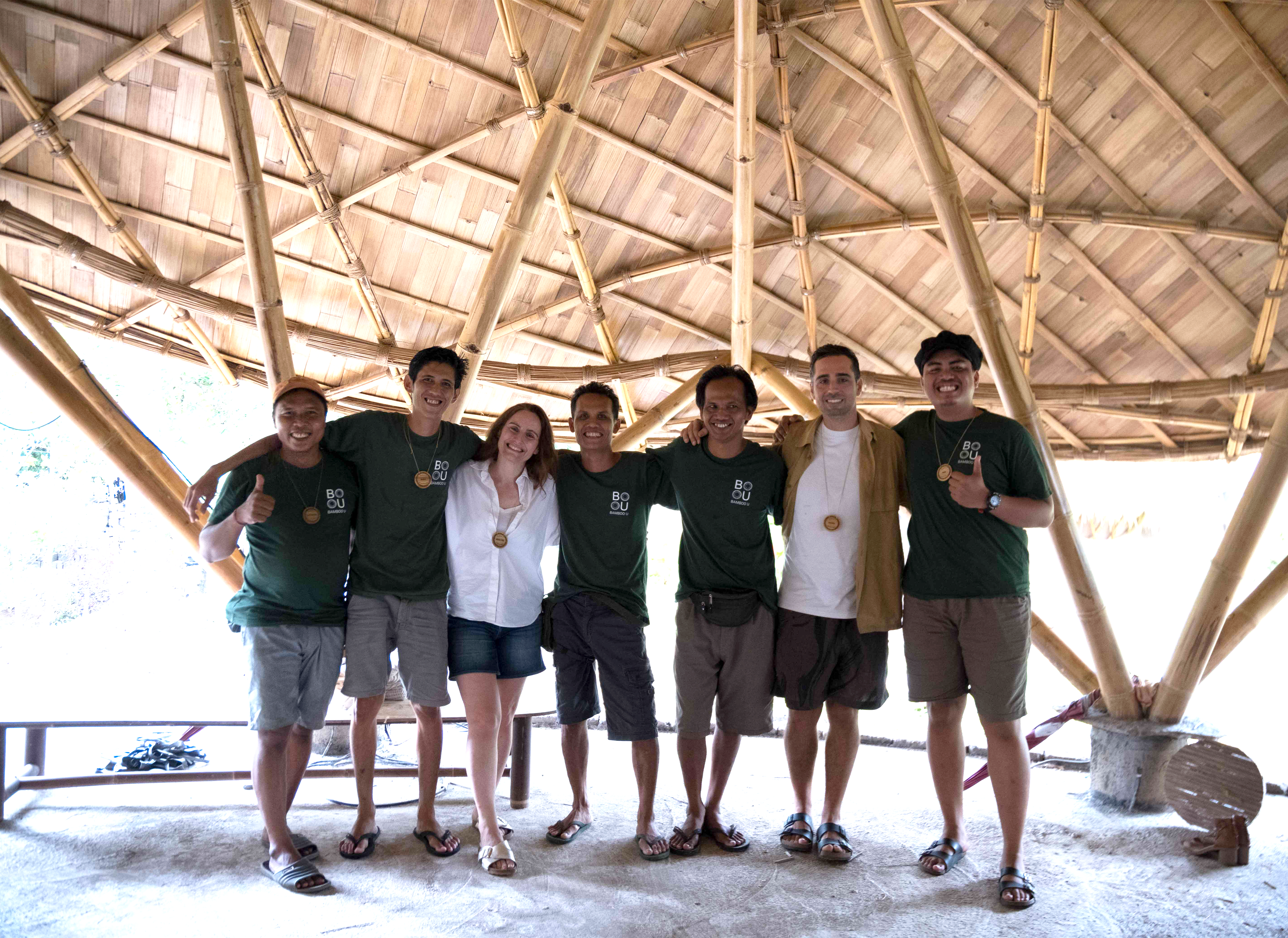
Join the next 11-day Build and Design Course, and let’s begin your bamboo journey! To know more and book the course: https://bamboou.com/11-day-course
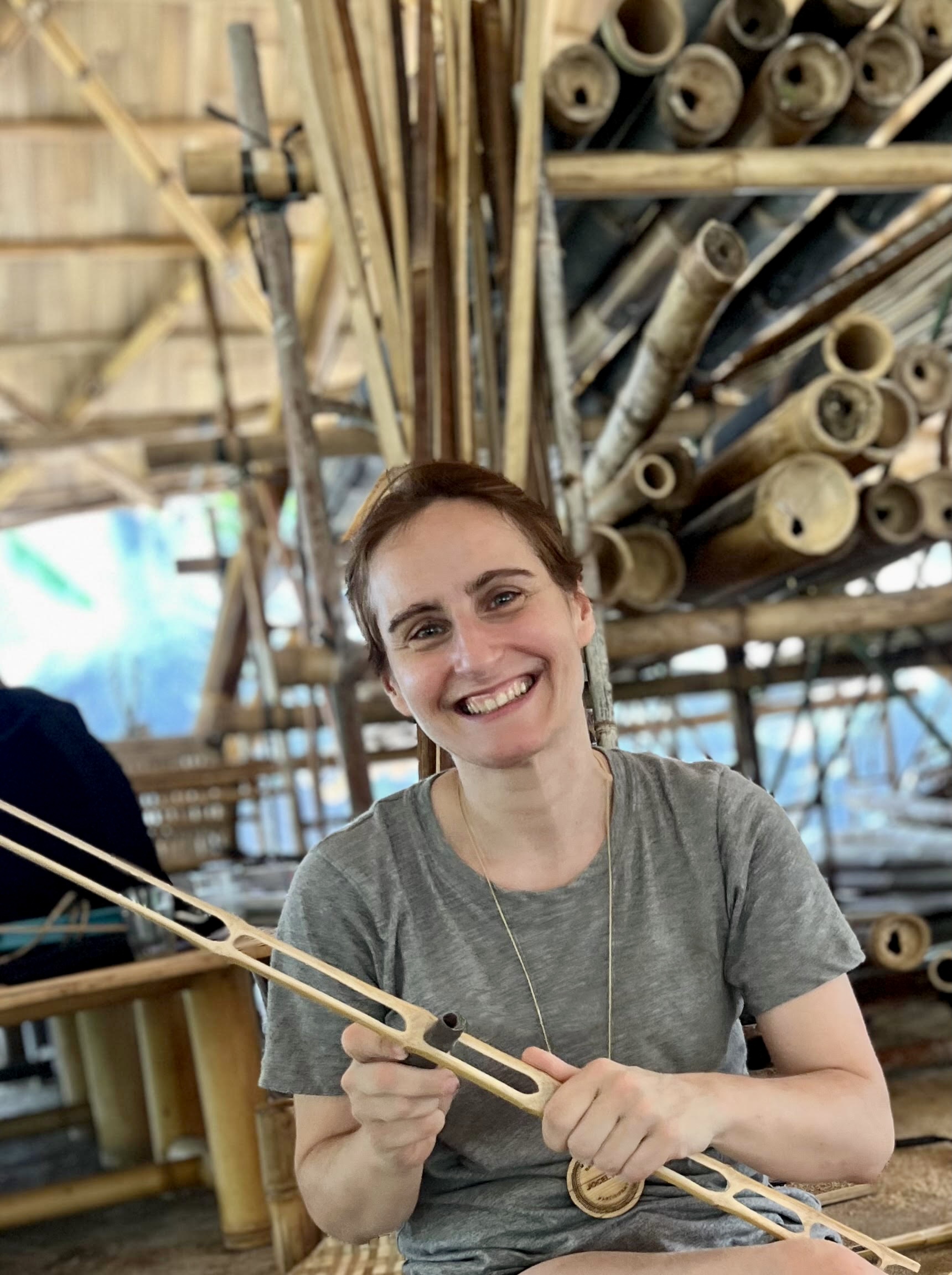
Meet Jocelyne Silva, a designer from Portugal now living in France, who is passionate about integrating sustainability into home interiors. Together with her brother, she joined the Bamboo U course to deepen her understanding of bamboo and its applications in design. Jocelyne aims to blend her distinctive style with sustainable practices, creating furniture that stands out for both its aesthetics and environmental friendliness.
JUNE 13-24, 2025
The 11 Day Bamboo Build & Design Course in Bali
In 11 days, we'll show you how to build bamboo structures we’ll share all that it takes to build with nature.
Start Anytime
The Bamboo Harvesting Course
The Bamboo Harvesting Course is an online step-by-step training to harvest and care for your bamboo clumps to ensure their longevity and productivity. This maximizes the potential of this beautiful grass as a rapidly renewable resource.Whether you are an architect, builder, or sustainability enthusiast, this mini course will enable you to utilize this rapidly regenerative resource as a durable construction material.It will help remove any fear or doubt about the durability of bamboo and help you build reputable bamboo structures that stand the test of time!

